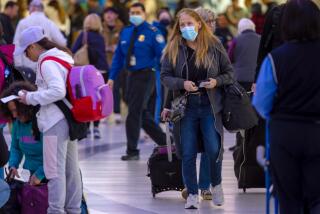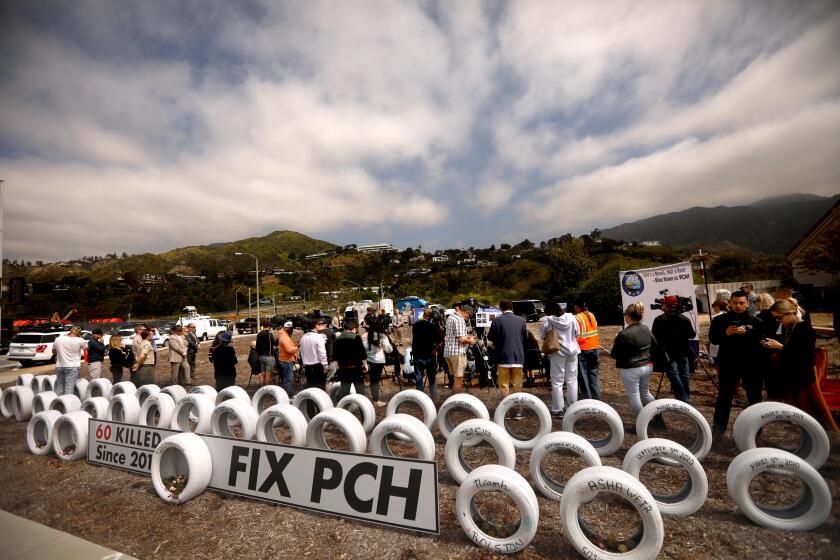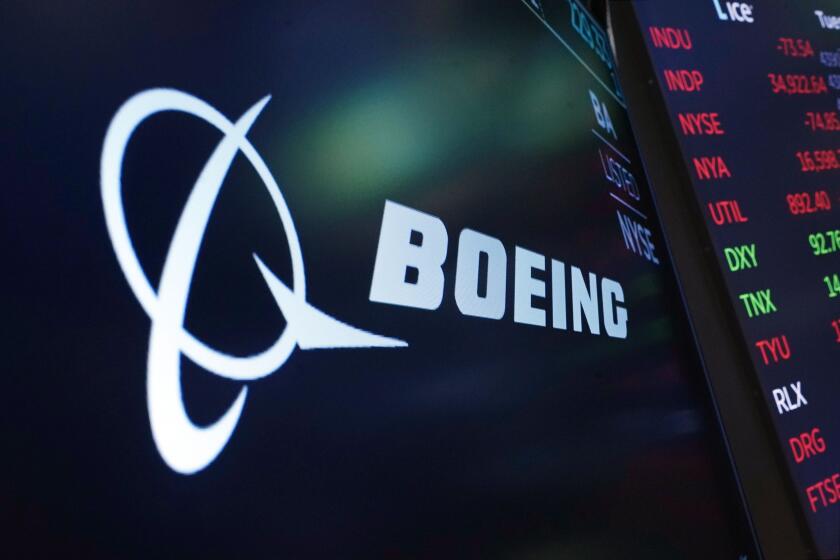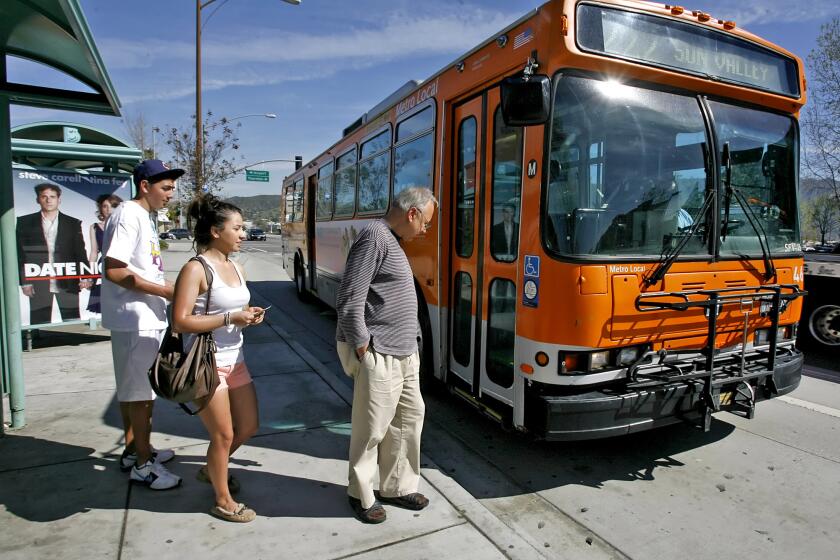Panel Bows to Pressure, Backs Off Chandler Trolley Route
Under pressure from residents and politicians, a key Los Angeles County transportation panel Friday backed away from endorsing Chandler Boulevard as the route for a proposed trolley line linking North Hollywood with Woodland Hills.
Instead, the county Transportation Commission’s four-member rapid transit committee unanimously voted to direct its staff to report back in January with alternate trolley routes across the San Fernando Valley.
The alternate routes will be studied on an equal basis with the Chandler route, which is one segment of a 14.3-mile route crossing the south Valley, the committee said.
The committee’s action still must be approved by the full commission Wednesday. However, staff members said it is highly unlikely that the full commission will designate a route over the objections of its transit committee.
Those opposed to the Chandler route expressed some dissatisfaction that the committee did not kill it--or the North Hollywood-Woodland Hills route of which it is a part.
Endorsed Last Week
After four years of study, the commission staff last week formally endorsed the Southern Pacific right of way along Chandler Boulevard as the North Hollywood route for the light-rail line.
Under the staff recommendation, the 14.3-mile line would continue on the railroad right of way west of Coldwater Canyon Avenue, ending at Topanga Canyon and Victory boulevards on the Canoga Park-Woodland Hills border. All Valley lines under consideration would tie in with a proposed Metro Rail station in North Hollywood.
There has been little opposition to the recommended route in the central and western parts of the Valley.
But opposition to using Chandler in North Hollywood has mushroomed in recent weeks as members of the Orthodox Jewish community, who say they would be disrupted, and homeowner groups along the proposed route have organized and picked up support from key elected officials.
About 50 opponents attended Friday’s session. Many said their peaceful neighborhoods would be disrupted by noise and vibrations from trolleys passing as often as every three minutes during rush hours.
Among those opposing the Chandler route are State Sen. Alan Robbins (D-Van Nuys) and Los Angeles City Council members Zev Yaroslavsky and Joel Wachs.
Robbins told the committee that Chandler was the “wrong route and the wrong way to treat a group of people.”
Opposes Burbank Boulevard
Along with other elected officials, he said he was equally opposed to using Burbank Boulevard in North Hollywood, which was studied by the staff as an alternative to Chandler.
Robbins also outlined plans to force the commission to start Metro Rail construction in the Valley next year and to extend the subway to the corner of Lankershim and Chandler boulevards in North Hollywood.
No plans have been announced to start subway construction in the Valley. The commission has under review a plan to substitute the light-rail trolley for the 2.3-mile segment of Metro Rail subway between the Chandler-Lankershim station and Universal City.
Such a move would require repeal of Robbins-introduced legislation that directs that Metro Rail construction begin at the Chandler-Lankershim intersection within a year of the start of construction in downtown Los Angeles, where work began in September.
Robbins reiterated that he will introduce legislation to abolish the appointed commission and transfer its job of building mass-transit projects to the county Board of Supervisors.
He also announced that he has secured a seat on the state Transportation Commission to use as leverage over the county commission.
Yaroslavsky, whose district was recently extended north into the Valley, argued that the commission staff improperly selected Chandler “on the basis of economics alone” and failed to consider the environmental impact on houses near the recommended route.
He accused staff members of not looking at other routes such as the Southern Pacific Coast Main Line, which could be used to connect North Hollywood and Chatsworth, because of higher costs.
Yaroslavsky was one of several speakers who promoted the main line as an alternative to the Chandler-Victory line linking North Hollywood with Warner Center.
Main-line proponents argued that the more northerly route across the Valley would draw riders from central Van Nuys, the General Motors Assembly Plant, Panorama Mall, California State University, Northridge, the Northridge Fashion Center and the Chatsworth-Northridge industrial area.
Robert H. Silver, co-chairman of the Eastern Sector Transit Coalition, also said that, since few residences exist along the main line, “there wouldn’t be the same threat to homes as with this line.”
Members of the coalition, consisting of 17 religious and homeowner groups along Chandler, passed out 2,000 leaflets in recent weeks to drum up opposition to the Chandler route, Silver said.
“Most of the people we talked to had never heard a word about this light-rail line,” he said. “But they got upset when they learned about it.”
Richard Stanger, the commission’s director for rail development, acknowledged that updated projections of the number of riders for the main line are likely to be higher than those on which the commission based its 1983 decision to discontinue studying that route.
He said that 1980 census figures led staff members to conclude that there would be 52,000 riders a day on the main line, versus 60,000 a day on the Chandler-Victory line.
“A real problem with the coast main line,” he said, “is how do you get down to Chandler Boulevard where it has to connect with Metro Rail?”
Both Lankershim Boulevard and Vineland Avenue are heavily congested north of Chandler, Stanger said.
More to Read
Start your day right
Sign up for Essential California for news, features and recommendations from the L.A. Times and beyond in your inbox six days a week.
You may occasionally receive promotional content from the Los Angeles Times.






